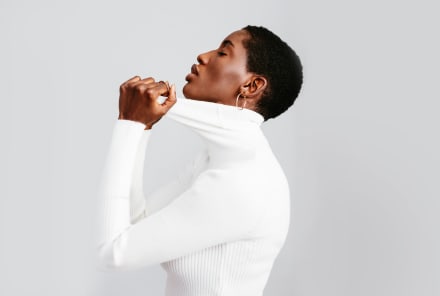Advertisement
Get To Know The 4 Phases Of Your Menstrual Cycle


Women have approximately 450 menstrual cycles in their lifetime. Unfortunately, women often view their cycles as a burden, and sometimes, they're even perceived culturally to be some kind of a curse.
But what if I told you that your monthly cycle has four unique phases, and that each one brings about different physical and emotional strengths in you? You'd probably want to learn how to work with your cycle instead of against it right?
Incorporating the simple tips and practices below have revolutionized my relationship with my cycle, and I believe they will do the same for you too.
Phase 1 — Menstrual Phase
The first day of bleeding is considered day one of your menstrual cycle. On this today, the hormone progesterone plunges, which causes the uterine lining to shed, AKA "your period". Often, a period lasts between 3 and 7 days.
Symptoms
During this week, your energy is the lowest in your cycle and you may feel tired and withdrawn. You may want to rest more than you usually do, or even take a day off. I know that a whole day off might not be possible, but introducing some quietness and deliberate rest time can be tremendously helpful. If you're pressed for time, your rest time could even look like a short walk or three minutes of deep breathing.
Action steps
Clear your calendar of big social and dating events and make a date with yourself. A hot Epsom salt bath is a great place to start. Try writing in a journal and reflecting on the events of the past month. This creates awareness and allows you to set intentions for the month ahead. If your energy is on the low side, limit exercise to gentle movement and stretching like yoga and walking.
Phase 2 — The Follicular Phase
This phase follows just after menstruation. It's called the Follicular phase because your pituitary gland releases a hormone called Follicle Stimulating Hormone (FSH), which stimulates the follicles in your ovaries to mature. FYI — these follicles contain your eggs.
Symptoms
Estrogen and testosterone start to rise during this phase. This will bring you a boost of energy, and can often improve your mood, too. You may even feel more assertive and willing to take risks. Testosterone stimulates your libido while estrogen makes you feel more extroverted and suppresses your appetite. This is a time when you may feel a wide variety of feelings related to self-sufficiency. Yay!
Action steps
Brainstorming and problem solving will be major strengths during this phase so initiate new projects and make big decisions. Make use of those social superpowers by speaking up in meetings, joining a new social group and scheduling time with friends! Strenuous exercise will feel increasingly good during this time too, so get out and enjoy physical activities that you love.
Phase 3 — The Ovulatory Phase
Ovulation is the culmination of all the hard work your body has been doing over the last couple of weeks. An egg gets released from its follicle in your ovary and will survive for 12-24 hours.
Symptoms
Estrogen and testosterone rise to peak levels, boosting the effects of the follicular phase. You may feel that you look better and feel more confident so it will be easier to verbalize your thoughts and feelings. Plus, your sex drive will be at its highest.
Action steps
This is a great time for job interviews, networking events and public speaking. Schedule a date night with your current beau or ask someone out! Energy levels are highest in this phase so continue to enjoy lots of physical activity.
Phase 4 — The Luteal Phase
The first 2 to 3 days of this phase will feel a lot like the ovulatory phase. That changes when estrogen and testosterone decline and your body starts producing progesterone.
Symptoms
Since progesterone is an anti-anxiety hormone, so you will find yourself beginning to wind down. Now is a good time for nesting, chores and taking care of your to-do lists.
The second half of this phase, however, is notoriously difficult for many women. You might feel PMS symptoms like cravings for carbohydrate-heavy comfort foods, bloating, breast tenderness, headaches, anxiety and moodiness. These symptoms are not all in your head but they aren't something you should suffer through either.
Action steps
Practice good self-care during the week before your period and you'll likely notice less PMS. Try spending extra time alone, eating healthy foods, taking a restorative yoga class, or receiving stress-relieving treatments, like a massage or acupuncture. Taking magnesium supplements can also be helpful in reducing headaches and muscle tension. When you honor your body's innate need for rest and relaxation during this phase, you will enhance your ability to get more out of the active phases of your cycle.
Put it into practice.
As you can see, the female body ebbs and flows in a similar way to the natural environment around us. Learning to honor your own internal cyclical nature creates an understanding of how your hormones work in each phase of your cycle. Even brands like P.volve are flipping the script on cycle syncing with their program Phase & Function, a nutrition and exercise series that works with the ebb and flow of your hormones to help you feel empowered. Ultimately, getting in touch with your personal cycle is key to maximizing your true potential in all areas of your life.


















